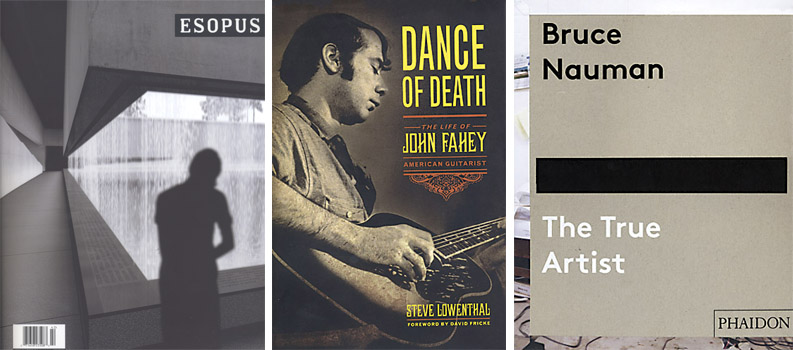Arts & Culture
Book Reviews: July 2014
The latest from Tod Lippy, Steve Lowenthal, and Peter Plagens.
Issue #21
Esopus (Esopus Foundation)
This ad-free arts and culture journal is the most innovative and lavish publication to hit newsstands in the 2000s. Curated/edited by Carroll County native Tod Lippy, each issue of Esopus is a treasure trove of commissioned artists’ projects (by the likes of Jenny Holzer and Ed Ruscha), portfolios, posters and printed ephemera, fiction and poetry, photo essays, film stills, exhibition reviews by museum guards, sketchbook pages, and music (on CD or via download) pertaining to a specific theme. This time around, highlights include sketches and plans by Michael Arad, designer of the National September 11 Memorial & Museum; Robert Frank-like photographs of 1954’s A Star Is Born movie premiere; and field recordings of a road trip through Africa. Such absorbing content guarantees that Esopus will never see the recycling bin.
Check out our Q&A with Esopus publisher Tod Lippy.
Dance of Death: The Life of John Fahey
Steve Lowenthal (Chicago Review)
Maryland-born Fahey is known as an innovative guitarist, but, as this sturdily written bio points out, he also affected American culture. Fahey revolutionized acoustic guitar playing by crafting jazz/folk hybrids on seminal albums like 1965’s The Transfiguration of Blind Joe Death and 1971’s America and anticipated DIY culture by releasing music on his own label as far back as the late-1950s. He also helped spark the 1960s blues revival by rediscovering legendary, but obscure, figures like Skip James and writing scholarly appraisals of the music. He even won a Grammy for his liner notes to the 1997 reissue of Smithsonian Folkways’ Anthology of American Folk Music. And he did it all in spite of himself, because hard-living Fahey managed to disillusion just about everyone he met. Lowenthal deftly balances Fahey’s achievements and shortcomings and, in the process, humanizes an extremely talented and profoundly troubled man.
Bruce Nauman: The True Artist
Peter Plagens (Phaidon)
Nauman, a hugely influential contemporary artist—Vanity Fair named him one of the “Six Greatest Living Artists” in 2013—created one of the highest-profile artworks in all of Baltimore. His neon sculpture, Violins Violence Silence, lit up an exterior corner of The Baltimore Museum of Art for 30 years. (It came down in 2013 for restoration but will return.) Brenda Richardson, who curated the BMA’s groundbreaking exhibition of Nauman’s neon work in 1982, has noted that it “consciously tried to provoke the viewer to a response; the language in the neons is often scrappy or even contentious in tone.” This gorgeous monograph, with authoritative text by Plagens, reinforces such notions, as it orients the artist as a pivotal provocateur in the worlds of sculpture, video and sound installation, and even performance art. No doubt we haven’t heard the last of—or from—Nauman.
